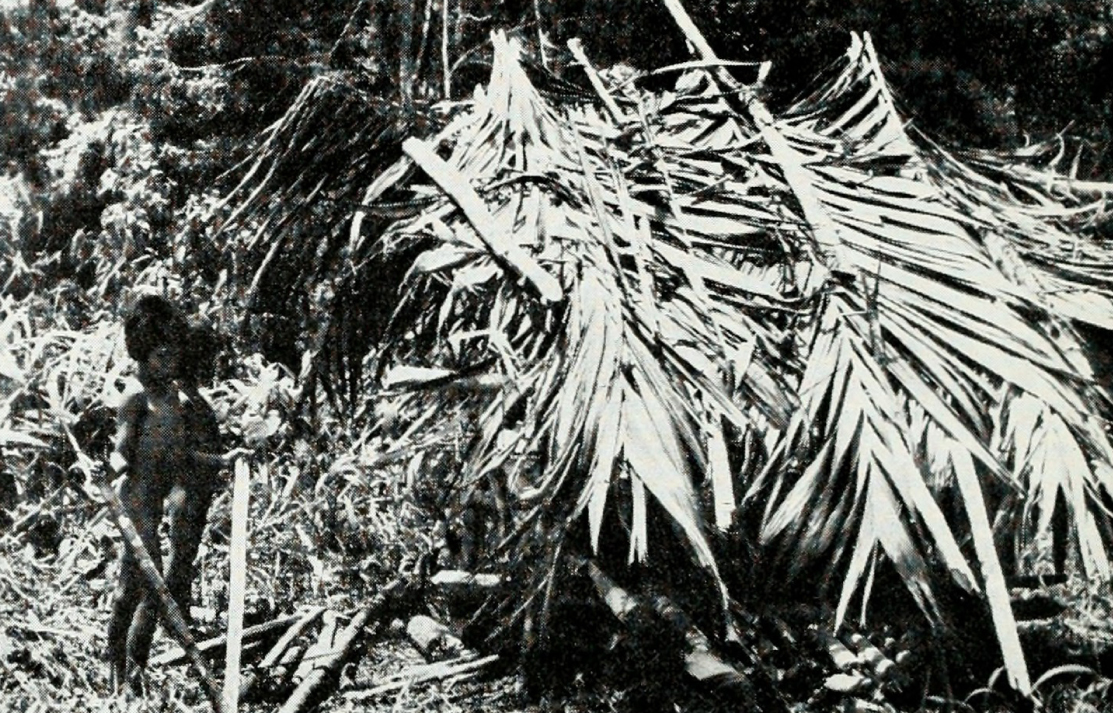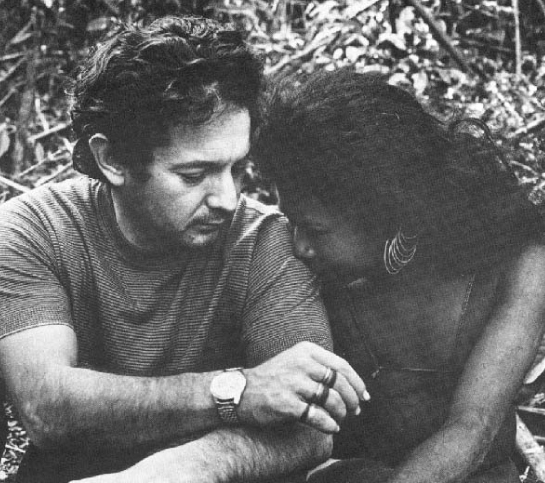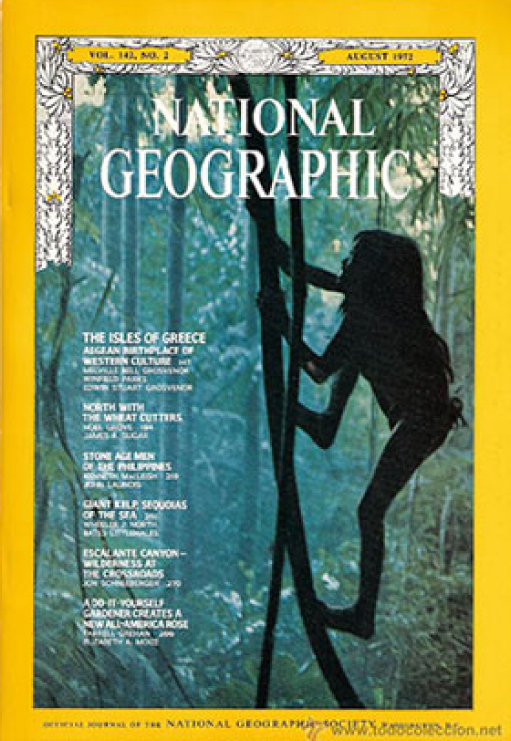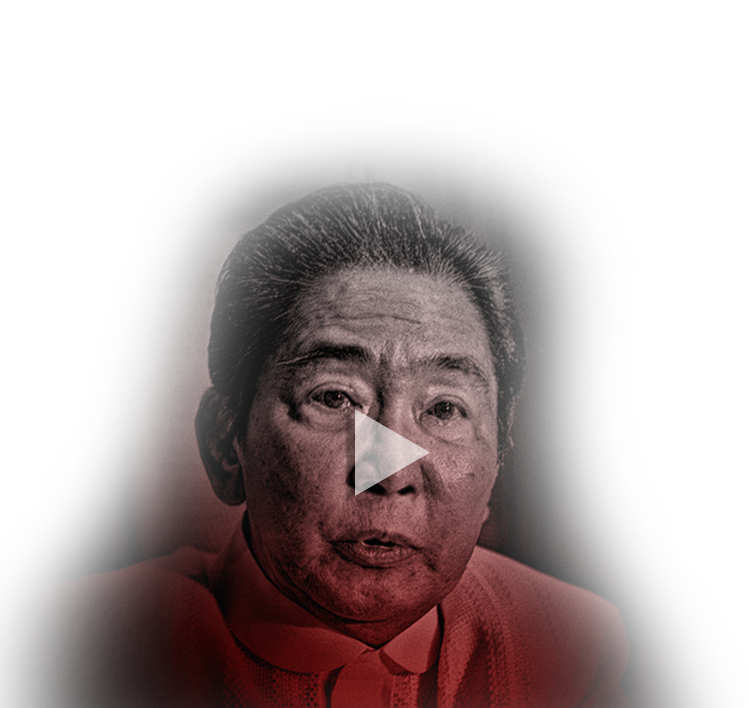In the pursuit to claim Sabah, the Marcos government needed to establish the long existence of Filipinos.
Enter the Tasadays, a primitive group believed to be living for years in a cave, tracing their roots to the pre-historic era and untouched by civilization.
It was wealthy businessman and amateur anthropologist Manuel Elizalde Jr. who introduced the miniscule group of Paleolithic humans to the world in June 1971, earning enormous attention that drew headlines, anthropologists, linguists and even Hollywood stars.
The story piqued the curiosity of experts, until it turned out to be too good to be true.
Untouched by civilization
A hunter laying traps in the wild allegedly discovered the presence of the Tasadays and reported it to Elizalde, who quickly jumped into a helicopter to see for himself what could be one of humanity's greatest treasures.
Elizalde, known for being a playboy and drunkard, was in command after President Ferdinand Marcos appointed him as presidential assistant on national minorities.
He was welcomed by the Tasadays as a hero, a god, a savior, and was regarded by the group as "Momo Dakel Diwata Tasadayor" or the "Great Bringer of Good Fortune to the Tasaday."
Elizalde claimed that the leaves-wearing Tasadays were isolated, uncorrupted and existed in the rainforests and caves, without knowledge of the developed world.
The group lived peacefully and had no knowledge of agriculture and hunting for food, running naked in their diminutive community. They were believed to be the last remnants of the Stone Age.
Worldwide interest
The story of the Tasadays caught the attention of the whole world. Many flew to the Philippines to study the ethnic group, immersing themselves to fully understand the tribe's way of life.
The discovery was even carried as a cover story by the National Geographic. The respected magazine dedicated 32 pages of coverage on the tribe, and featured a full-size image of a Tasaday kid hanging on a vine, identified as Lobo, on the cover. Veteran Associated Press photographer John Nance also wrote his firsthand experience in a book entitled "The Gentle Tasaday."
Soon, the then serene community was disturbed by inquisitive foreigners, which led to the closing of its doors to the public.
Controlling the access, Elizalde decided to restrict the public around the same time Marcos declared martial law to protect the Tasadays and their home. A presidential decree was enacted in 1976 protecting the 26 members of the tribe and the 46,299-acre land from the dangers of exploitation due to rampant logging and mining as well as experts studying them.
The champion of the Tasadays even amassed at least $35 million from his initiative to raise funds for the small tribe while they were again kept from the public's radar.
Issues
While many celebrated the discovery of the Tasadays, some smelled the stinking lies that could not be kept secret.
Critics of the administration accused Elizalde and Marcos of using the innocent tribe to cover up human rights violations, abuse of power and corruption during that dark period in Philippine history. The Tasadays were used to perfume the regime around the time of Martial Law.
Aside from concealing national issues, the two men were also accused of land grabbing.
Then came the revelation.
When the country tried to climb out of the grave Marcos excavated, the truth about the Tasadays was also unearthed.
Marcos and his family fled the country after the EDSA Revolution in 1986. His long-overdue term as president got cut, and when his regime ended so was the authority of Elizalde.
The hero of the Tasadays left the country in 1983, reportedly bringing along with him the million raised for the group and funds of the Panamin Research Center.
"For 17 years I've been accused of having cordoned off the Tasaday reservation in order to take advantage of it for business reasons. Seventeen years have passed and I have still gotten nothing from this land, whatsoever," Elizalde said in a 1993 documentary by Nova titled "The Lost Tribe."
Hoax?
While Filipinos celebrated their independence, Oswald Iten, a Swiss journalist, saw the opportunity to check the life of the Tasadays and confirm their authenticity. To his surprise, the once-celebrated Stone Age community was found away from the caves, living in nipa huts and wearing casual clothes, and were into farming.
"They lived in houses, they didn't live in caves and they told me they were in fact not a separate tribe called Tasaday. They told me it was the idea of Elizalde to make them pose as cavemen and Stone Age people in order to become famous," Iten said in "The Lost Tribe."
Iten's report quoted a member of the Tasadays as saying that they were promised money and protection by Elizalde in exchange for pretending to be cavemen.
"Elizalde forced us to live in the caves so that we'd be better cavemen. Before he came, we lived in huts on the other side of the mountain and we farmed. We took off our clothes because Elizalde told us to do so and promised if we looked poor that we would get assistance. He gave us money to pose as Tasadays and promised us security from counter-insurgency and tribal fighting."
Iten showed photos of the Tasadays wearing casual clothes to add credibility to his story.
Iten's revelation again drew international attention, but this time for all the wrong reasons. Journalists and scientists once again scrambled to report and study the real lives of the once believed to be Stone Age people.
Without knowing the rumors of a hoax, a German group of journalists also sought to check the Tasadays a week after Iten came. The group documented how the Tasadays were back again in the caves wearing leaves as clothing and living a primitive way of life.
Another photo was presented by Iten showing Tasadays wearing leaves, but contemporary underwear could be glimpsed.
"The Tasaday was a hoax orchestrated by Elizalde," Iten claimed.
ABC News made a follow-up story called "The Tribe That Never Was" and quoted another Tasaday about conspiring with Elizalde.
"The Tasaday told us that in exchange for posing naked and playing the Stone Age caveman routine they said they were promised food, clothing and much to our astonishment, they were promised of their own helicopter," the producer of the story, Judith Moses, said in the same documentary.
Meanwhile, Elizalde, who came back to the country after four years, denied the accusations thrown against him.
"All these accusations are foundless. They are based on gossip rumors and deliberate lies. Now why they did this is a rather complicated story and I am ready to confront any of them... the loggers, cause oriented groups, who may have a political motivation, scientist, who perhaps, were scared to go into the mountains where we lived, because I lived in the mountains with the tribes," he said.
Evidence
Further studies revealed that the Tasadays were not from the Stone Age based on linguistic analysis. The tribe was found to be a breakoff group of the nearby Manobos and Tboli, who lived separately for 150 years before they were discovered.
Experts also doubted that the Tasadays were isolated for a long time and had no knowledge of farming since they are a three-hour walk away from neighboring communities in secluded areas in Mindanao where agriculture was already introduced.
Another expert said the Tasadays could not be vegetarians as they claimed to be because they could not survive with the food they ate.
The claim that they lived for thousands of years inside the cave was also debunked, since no human habitation was found.
On the other hand, some of the first scientists to study the ethnic group believed that the whole Tasaday story was not a hoax, insisting the group itself is real.
To settle the issue, the American Anthropological Association sought the services of Thomas Headland to preside over a symposium where journalists and scientists debated over the authenticity of the Tasadays.
Headland, who spent more than 20 years in the Philippines, edited the book "The Tasaday Controversy: Assessing the Evidence" in 1992 where all arguments were presented.
Headland concluded that the Tasadays were not performers paid to act like Stone Age people, but added that there were exaggerations to the stories.
"We know for a fact that they were originally part of the Manobo farming community, for some reason they broke off from a larger community. We know that they broke off some time in 19th century based on linguistic data," Headland said.
Victims
The debates went for years until Congress, through the Committee on National Cultural Communities, declared the Tasadays to be genuine. The fame faded and the attention was gone for the simple Tasadays.
Decades later, Lobo, the kid holding on to a vine, revealed that their discovery, Elizalde's intrusion and the worldwide attention made their simple lives complicated.Regardless of their origins, the Tasadays were clearly used by powerful people for their own selfish interests. — Philstar.com NewsLab








